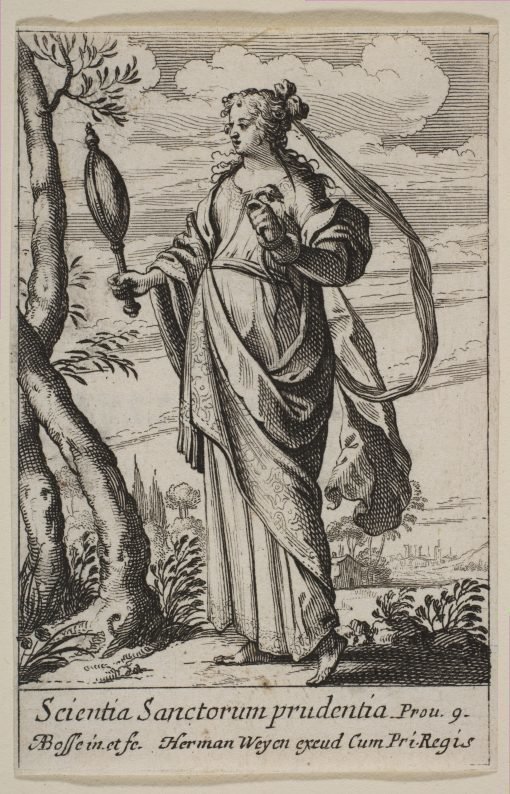
“Prudentia personified held a mirror for self-awareness (which we call “conscience”) and a serpent for wisdom…” (Christopher Howse)
Dr. Post argues that the virtue of prudence is deeply connected to the sort of taste needed to distinguish the truly beautiful. This certainly follows in the footsteps of much taught about virtue throughout the ages.
Aristotle sees such a connection between taste and prudence that he feels the need to give argument why prudence is virtue and not art (“Nicomachean Ethics” Book VI. Ch.5. 20-30):
[Prudence], then, must be a reasoned and true state of capacity to act with regard to human goods. But further, while there is such a thing as excellence in art, there is no such thing as excellence in [prudence]; and in art he who errs willingly is preferable, but in [prudence], as in the virtues, he is the reverse. Plainly, then, [prudence] is a virtue and not an art. There being two parts of the soul that can follow a course of reasoning, it must be the virtue of one of the two, i.e. of that part which forms opinions; for opinion is about the variable and so is [prudence]. But yet it is not only a reasoned state; this is shown by the fact that a state of that sort may forgotten but [prudence] cannot.
Thomas Aquinas certainly say a connection (“Summa Theologiae” SII-II. Q47. A5.):
Accordingly we must say that since prudence is in the reason, as stated above (Article 2), it is differentiated from the other intellectual virtues by a material difference of objects. “Wisdom,” “knowledge” and “understanding” are about necessary things, whereas “art” and “prudence” are about contingent things, art being concerned with “things made,” that is, with things produced in external matter, such as a house, a knife and so forth; and prudence, being concerned with “things done,” that is, with things that have their being in the doer himself, as stated above (I-II:57:4). On the other hand prudence is differentiated from the moral virtues according to a formal aspect distinctive of powers, i.e. the intellective power, wherein is prudence, and the appetitive power, wherein is moral virtue. Hence it is evident that prudence is a special virtue, distinct from all other virtues.
Josef Pieper (“Four Cardinal Virtues”):
[A]s in the creative cognition of God all created things are pre-imaged and pre-formed; as, therefore, the immanent essences of all reality dwell in God as “ideas,” as “preceding images” (to use the term of Meister Eckhart); and as man’s perception of reality is a receptive transcript of the objective world of being; and as the artist’s works are transcripts of a living prototype already within his creative cognition so the decree of prudence is the prototype and the pre-existing form of which all ethically good action is the transcript. The precept of prudence is the “permanently exterior prototype” by which the good deed is what it is; a good action becomes just, brave, temperate only as the consequence of the prototypal decree of prudence. Creation is what it is by its correspondence with the “standard” of God’s creative knowledge; human cognition is true by its correspondence with the “standard” of objective reality. The work of art is true and real by its correspondence with the pattern of its prototype in the mind of the artist. In similar fashion, the free activity of man is good by its correspondence with the pattern of prudence. What is prudent and what is good are substantially one and the same; they differ only in their place in the logical succession of realization. For whatever is good must first have been prudent.


